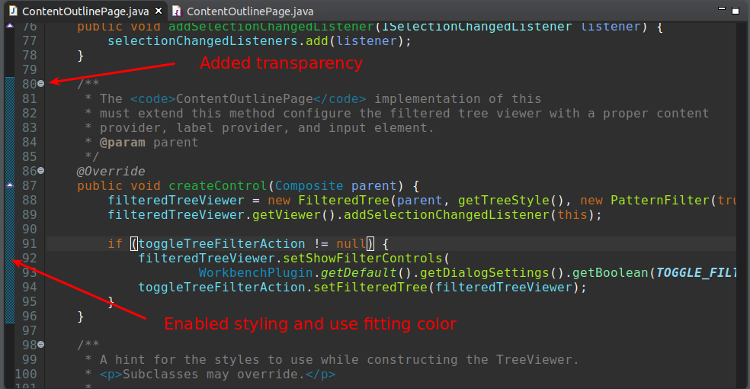
For more information, see Optimize for wide-screen monitors.
ECLIPSE IDE DARK MODE WINDOWS
Show the tool windows that are attached to the top and bottom edges on the left side in two columns. With a different shortcut, there will be no mnemonic for the tool window button. Mnemonics for tool windows show the corresponding key bindings only when the shortcut is configured to Alt+number, where number is an integer number in the range from 0 to 9. You can hold the Alt key and press the corresponding number key to switch tool windows regardless of this setting: Alt+1 for the Project tool window, and so on. Show tool window quick-access numbers on the tool window buttons. For more information, see Tool window bars and buttons. Show the tool window bars around the edges of the main window. Select which antialiasing mode you want to apply to the editor: No antialiasing: this option can be used for displays with high resolution, where non-antialiased fonts are rendered faster and may look better. Greyscale: this option is recommended for non-LCD displays or displays positioned vertically. This allows smoothing text and rendering it with greater detail. Subpixel: this option is recommended for LCD displays and takes advantage of the fact that each pixel on a color LCD is composed of red, green and blue sub-pixels. Select which antialising mode you want to apply to the IDE (including menus, tool windows, and so on): Show icons to the left of the items in the main menu and context menus.Ĭonfigure a custom background image for the IDE. When disabled, the header will show only the name of the project and file.

ECLIPSE IDE DARK MODE FULL
Show the full path to the project and to the current file in the main window header. When enabled, hold the Alt key to move things around.īy default, this option is disabled and you can move everything without any extra keys. Īvoid accidentally moving files, editor tabs, tool window buttons, and other UI components. In this dialog, you can also set the duration of the scroll animation and change the appearance of the animation based on. You can disable it to use precise scrolling instead: press Ctrl+Shift+A, find and open the Smooth Scroll Options dialog, and disable the Animated smooth scrolling checkbox. This also enables animated smooth scrolling for Windows and Linux by default. Scroll the UI smoothly, pixel-by-pixel, instead of line-by-line. Underline hotkeys that you can press to use controls in dialogs Underline hotkeys that you can press to execute a menu action These lines can help you better understand the hierarchy of the components in your project.ĭecrease the amount of space between the tool window border and the text in tree views, for example, in the Project tool window. If no version of java is installed in PC, on entering the commands in the ‘Command Prompt’, it will give us not recognized message as shown in the picture below.Display vertical lines that mark indent levels in tree views, for example, in the Project tool window.
ECLIPSE IDE DARK MODE INSTALL
If you have previously installed older version(s) of JDK/JRE and want to install latest version, then first uninstall all the previous ones.Ĭontrol Panel -> Programs and Features ->Uninstall all those programs which begin with “Java”, such as “Java SE Development Kit …”, “Java SE Runtime. Although you can install multiple versions of JDK/JRE concurrently, it is or it just gets messy.

It is recommended to install the latest JDK. If a version number is displayed, then you already have JDK and JRE properly installed on your computer. The commands are same for Linux and MacOS Terminals. ‘javac -version’ is the command used to display the JDK version. ‘java -version’ is the command used to display the JRE version. Run the following command and press enter key,


Let us first check if our system already has Java Installed on it or not. Checking and Uninstalling Previous Java Versions


 0 kommentar(er)
0 kommentar(er)
